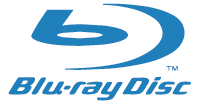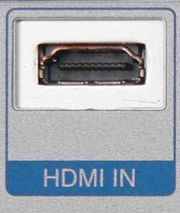To Blu or Not to Blu, That Is the Question

It’s never a good thing when one of your consumer electronics doodads dies smack in the middle of a format transition.
I’ve been rediscovering this timeless bit of wisdom now, because my DVD player recently died. This was a bigger disappointment than you might think. See, when I built my current home theater system nearly a decade ago, the early-adopter gene passed on to me by my Dad drove me to buy the best DVD player then available — the Denon DVD-2800. The DVD-2800 was a hulking beast of a machine that offered a feature that had previously been available only in players costing many thousands of dollars — progressive scan playback, a feature that (on an HDTV) provides the maximum possible picture quality you can get from a DVD.
To get this superior performance, I paid an (ahem) superior price: $700! That still seems like a lot of money to me now, so you can imagine how much it felt like back when I was still making just-out-of-college money. But compared to other progressive-scan players at the time, $700 was a bargain; the DVD-2800’s picture quality surpassed players costing $2,000 and up. So I sucked it up and told myself that I was buying a fine piece of gear that would keep me happy for many years to come.
And so I was. But now the DVD-2800 is dead, and I’m stuck with the question: what comes next?
If I wanted to just buy a straight replacement for it, I could do so for practically nothing. The feature set that seemed like a steal at $700 back in 2000 is now available for $50 plus tax. They practically give the damn things away in cereal boxes.
But, there’s a reason why decent DVD players are so cheap — the high-definition DVD wars are finally over, and we know now what The Future looks like. Blu-Ray Disc offers picture quality that blows plain old DVD (even when progressive-scanned) out of the water, and now that its primary competitor, HD-DVD, is dead, it’s clear that the home video market is settling into two segments: Blu-Ray for obsessives like me, and DVD for everyone else.
Thing is, though, going Blu isn’t cheap. Decent Blu-Ray players start at $300 and spiral upwards from there, just like DVD players did back in the day. And that’s not the only cost associated with Blu; your old DVDs will look the same on a Blu-Ray player as they do on a good progressive-scan DVD player, so to get anything out of your new Blu-Ray player you have to buy your movies over again in Blu. And for maximum quality you need a “1080p” HDTV, which I don’t have (again the early adopter gene bites me in the ass; the TV I bought at around the same time as the Denon DVD player tops out at 1080i).
Naturally, in a few years decent Blu-Ray players will be cheap and plentiful, just like progressive-scan DVD players are today; which is why I had figured I would wait a few years before going Blu, letting someone else pay the early-adopter premium this time. But now I need to buy something or else resign myself to never watching a DVD for however many years that takes.
So this is my question: is $300 a low enough price point, do you think, to make it worth trying to “future-proof” by going Blu? Or does it make more sense to just spend $50 on another DVD player and wait for Blu to get cheaper? The cheap-ass side of me screams that it makes no sense to shell out extra for Blu until I also have the cash to buy new discs and a new TV that can really make use of it — not to mention that, unlike the days of dot-com giddyness when I bought the DVD-2800, the Current Unpleasantness argues against extravagance of any kind. The early-adopter in me, however, screams back that if you’re eventually going to end up going Blu anyway, you may as well put the $50 towards that now rather than wasting it on a DVD player you’re just going to throw away in 6 or 12 or 18 months.
Have any of you gone Blu yet? What do you think?
UPDATE (March 24): In the comments, my friend Oscar asks a good question: why not split the difference and get an “upconverting” DVD player, like the outstanding units made by OPPO Digital?
(For reference, an upconverting DVD player is a player that uses some clever software to take your regular DVDs and display them in near-HD quality. This process is also referred to by some manufacturers as upscaling. It doesn’t look as good as Blu-Ray, but you don’t have to re-buy the movies, so it’s much more economical; and upconverting players are priced in the sweet spot between plain-old-DVD and Blu-Ray, usually running an affordable $100-$150.)
It’s a good suggestion, but it doesn’t work for me because of another way I got bit in the ass by the early-adopter gene. Permit me to explain.
See, when HDTV was first standardized, the electronics industry decided to use what are called “component video” cables to connect HDTVs to HD video sources. This made sense because component offered the highest-quality connection available. So for several years, every HDTV that was sold was sold with component plugs on the back.
Then in the early 2000s, the movie and TV production industry had one of its periodic shit fits about Evil Hackers, and the source of their nightmares was all those TVs with component plugs on them.
Component cables, you see, are “dumb” cables — they just pass the signal along from point A to point B without monkeying with it. To the copyright cartel, this was a terrifying prospect, because it meant you could do things like (gasp!) record the signal onto a videotape. And if people could easily record and share HDTV broadcasts, they feared, they would stop buying movies and TV shows on disc in favor of getting them from the Evil Hackers for free.
The solution, they decided, was to come up with a new cable — called HDMI — that encrypted the signal so that it couldn’t be recorded. And then to use their monopoly over high-profile content to force the electronics industry to ditch component in favor of their new, “protected” connection.

It mostly worked. HDMI is now the standard connector for home theater devices. But people who bought HDTVs before the big shift to HDMI — like, say, me — found that our TVs had instantly become near-obsolete, because you can’t plug things into them anymore without having the things you plug in suddenly lose huge chunks of functionality.
Take upconverting DVD players. They all require you to connect the player via HDMI in order for the upconverting feature to be activated. Most still come with component plugs as well, but if you connect to your TV using those, all the fancy upconverting software gets switched off — and you’ve essentially got a $50 DVD player, only you paid $150 for it.
In most cases this would be a simple matter of just buying an adapter and putting it in between your TV and your player. But because the push for HDMI was driven by a perceived need for copy protection, adapters don’t work; if they did, the Evil Hackers would use them to get around the encryption. So for the fancy upconverting features to activate, your entire connection from the player to the TV must use HDMI cables.
Which means if you don’t have any connectors for HDMI cables on your TV, then you’re kind of boned. Your only option is to buy a whole new TV.
So that’s why I haven’t been considering upconverting players. The HDMI problem isn’t unique to them — Blu-Ray players don’t give maximum 1080p resolution unless you connect them via HDMI, for example — but you can still get 1080i out of them via component, which isn’t too bad as a stopgap. But buying an upconverting DVD player as an interim measure makes little sense if you can’t make use of the one thing that makes it more appealing than a cheap-o plain Jane DVD player. And I can’t.
All of which explains in part why I hate copy protection schemes with a burning fury — because they end up screwing legitimate users like me, without particularly inconveniencing the Evil Hackers they are supposed to hurt. I will have to go spend thousands of dollars on a new HDTV at some point just to get the Magic Connectors that eventually will be required to hook up anything, for no reason other than reassure some rich studio executives that their business model isn’t borked. That’s fucked up no matter how you look at it.

Comments
Oscar
March 24, 2009
7:37 am
I’m waiting for HD content over the Net, which you can start to get via Amazon’s service, iTunes, maybe Boxee?
I’d stick with a good DVD player that upscales the picture to 1080i. Last year I got one from Oppo and have been happy with it.
http://www.oppodigital.com/dv980h/
Jason Lefkowitz
March 24, 2009
9:33 am
Good thoughts, Oscar — I updated the post to address them a bit…
Oscar
March 28, 2009
2:14 pm
Its funny you bring up the component issue. I’m not up to date on the latest line of Oppo players but the one I have does include component out. Out of the box though, component signal is 480p. The model I have, I researched this before buying the DV-970HD, is hackable to allow 1080i over component.
It was as simple as downloading an ISO image and putting it into the drive before powering it on. Ten minutes later I had 1080i going out over the component cables to the VGA input in my projector.
Oscar
March 28, 2009
2:18 pm
Here are some links, most lead to the model i have:
http://tinyurl.com/oppo-hack
and it looks like its still available from amazon
http://tinyurl.com/oppo-970hd